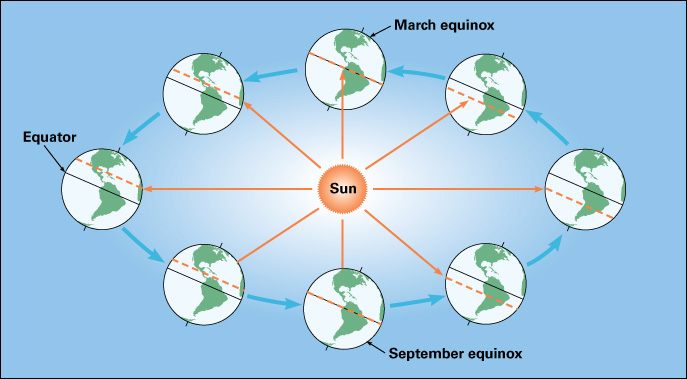Equinox << EE kwuh noks >> is either of the two moments each year when the sun is directly above Earth’s equator. On the days of the equinoxes, all places on Earth receive approximately 12 hours of sunlight. The term equinox comes from a Latin word meaning equal night.

The equinoxes occur on March 19, 20, or 21 and on September 22 or 23. In the Northern Hemisphere, the March equinox marks the start of spring and is often called the vernal equinox. The position of the vernal equinox is called the first point of Aries. The word vernal means of spring. The September equinox marks the beginning of autumn and is called the autumnal equinox. The seasons are reversed in the Southern Hemisphere.
The time interval from the March equinox to the September equinox is longer than that between the September equinox and the next March equinox. This time difference results from the earth’s elliptical (oval-shaped) orbit around the sun. The earth moves faster in its orbit when it is closer to the sun. The distance between the earth and the sun is shortest in January. Therefore, the earth completes the semicircle from the September equinox to the March equinox faster than it does the opposite semicircle.
Astronomers also use the term equinox for either of two imaginary points where the sun’s apparent path among the stars crosses the celestial equator. The celestial equator is an imaginary line through the sky directly over the equator.
The positions of the two equinoctial points do not remain the same from year to year. They shift westward extremely slowly—about 1 degree every 70 years. This gradual movement of the points, called the precession of the equinoxes, is caused by a slight change in the direction of the earth’s axis of rotation. The change results mainly from the gravitational pull of the moon and the sun on the earth’s equatorial bulge.
See also Solstice.
